The 5th Regional Collaboration Drill Held in Malaysia — A Large-Scale Exercise Toward Realizing “One ASEAN, One Response” —
The 5th Regional Collaboration Drill (RCD) was successfully conducted in Malaysia, bringing together key stakeholders from ASEAN Member States to enhance coordination and response capacities for both affected country and assisting countries. This large-scale exercise was designed to operationalize the ASEAN principle of “One ASEAN, One Response”, reinforcing solidarity and collective action in times of regional crisis. It was the first on-site drill after the global pandemic since 2019 when Indonesia hosted the 4th RCD in Bali.
Through this drill, participating countries tested real-time collaboration mechanisms, including the deployment and accepting of Emergency Medical Teams (EMTs), coordination capabilities of EMTCC, and review and test throughout emergency medical response operations. The event marked a significant step toward further institutionalizing regional coordination frameworks developed under the ARCH Project.
- Malaysia’s Leadership in Hosting the 5th RCD: A Model of Coordinated Preparedness
In preparation for hosting the 5th RCD, led by the Ministry of Health Malaysia including the members of the ARCH Project’s Project Working Group (PWG), demonstrated consistent and structured planning. Throughout the lead-up to the event, the team designated section leads for each operational task, forming a well-coordinated structure that carried the exercise to successful execution. The drill showcased not only the expertise of the health authorities and medical practitioners, but also the effective collaboration of administrative, logistics, and volunteer teams. The host team’s management capacity, under the Ministry of Health Malaysia, offered valuable lessons in large-scale coordination and leadership—an area in which the ARCH Project also benefited through close observation and engagement. To support these efforts, the ARCH Project conducted several preparatory meetings starting in March, including technical and strategic planning support. This included the implementation of the C-Course and the involvement of Japan Advisory Committee (JAC) of the ARCH Project and mentors from previous RCD host countries, who provided both technical and mental support throughout the preparation and delivery phases.
The exercise scenario simulated a large-scale flood disaster triggered by prolonged monsoon rains beginning in the second week of September, which severely affected the Klang Valley—Malaysia’s capital region—including key government-designated cities such as Kuala Lumpur and Putrajaya, located in Selangor State. The scenario focused on the strain placed on healthcare provision due to infrastructure disruptions and surging patient needs. ASEAN Member States (AMS) were called upon to support Malaysia in responding to this emergency following to the national emergency protocol of request for international assistant. Moreover, the exercise incorporated a complex disaster: a chemical spill originating from a damaged industrial facility to demonstrate responding to patients affected by chemical exposure, adding a layer of complexity to the simulation and testing the coordination and operational readiness of EMTs and other response units under the ASEAN SOP for EMT.
- Pre-deployment Exercise for the 5th RCD
A Pre-deployment exercise was conducted to simulate Malaysia’s mechanisms requesting and accepting international assistances as the affected country, particularly focusing on its readiness to receive International EMTs (I-EMTs) from AMSs. The core participants in this exercise were the National Disaster Management Offices (NDMOs) of AMS and the AHA Centre, including the Japan Disaster Relief (JDR) Secretariat. Ahead of the actual Pre-deployment drill, the ARCH Project hosted an online refresher session on September 13 focused on reviewing the application and procedures as outlined in the ASEAN Standard Operating Procedure for Regional Standby Arrangements and Coordination of Joint Disaster Relief and Emergency Response Operations (SASOP). Lectures from the AHA Centre and Malaysia’s NDMO (NADMA) revisited the procedures for support request initiation based on SASOP for ensuring their understanding. The scenario followed the assumption that severe flooding in the Klang Valley region of Selangor State had prompted Malaysia to declare a national emergency, thereby enabling NADMA to issue a formal request for assistance to the AHA Centre, which in turn coordinated the deployment of I-EMTs from ASEAN countries. Although the RCD is held only once a year, this opportunity for hands-on practice and review of the national SOPs was highly valued by participants. One staff member involved in document screening, particularly the pharmaceutical review, noted how the exercise prompted important questions—for instance, “How can we standardize the required amount of medication for a two-week deployment?”—highlighting areas for improvement and deeper understanding.
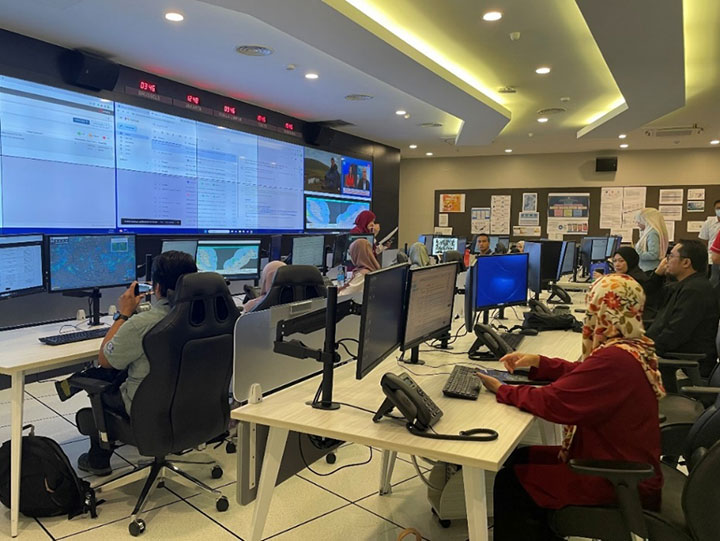
Pre-deployment exercise held in NADMA Emergency Operations Center room. MOH Malaysia assigned staff responsible to a country separately. NADMA monitored all the request of assistances by communicating with AHA Center.
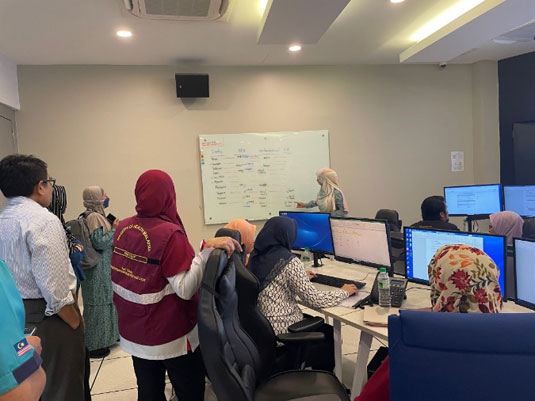
Monitoring by NDMO the countries who completed request of assistance
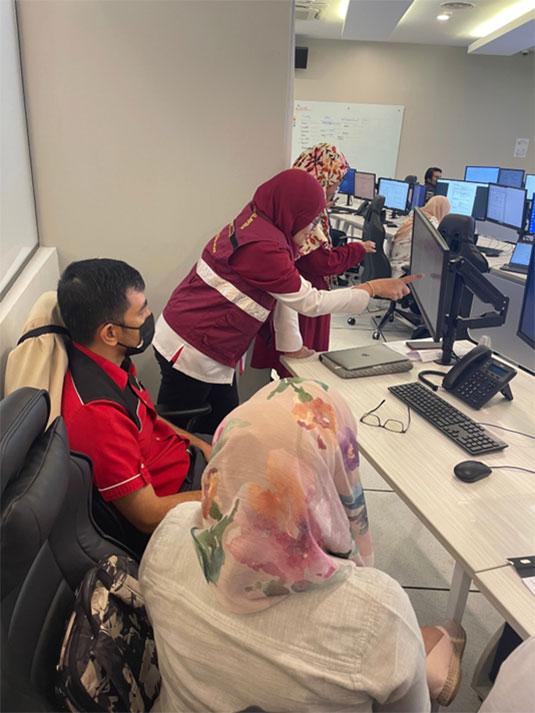
Checking the list of equipment and drugs from AMS NDMO, especially the pharmaceutical department carefully check the drugs by confirming the national SOP
- September 25: Workshop Session
A full-day workshop session was held on September 25, just before the RCD field exercise. This workshop was designed to consolidate and refresh participants’ understanding of the operational frameworks and tools relevant to ASEAN’s emergency disaster response mechanisms.
Key components of the session included:
- Review of SASOP (ASEAN Standard Operating Procedure), focusing on its application in emergency situations;
- Overview of Malaysia’s national disaster and emergency management systems, to align international teams with local procedures;
- Explanation of ASEAN Collective Measures, outlining coordinated response actions among ASEAN Member States;
- Instruction on EMT operational documentation, including how to complete and verify required forms such as deployment applications and activity reports;
- Creation of the Comprehensive Team Information (CTI) documents to ensure unified information about each EMT’s capacity and structure;
- Training on Minimum Data Set (MDS) for data management, with guidance on standardized methods of health data collection during deployment.
This session served both as a capacity-building exercise and final preparation, ensuring all participants were aligned with regional protocols and ready for smooth implementation during the upcoming field exercises.
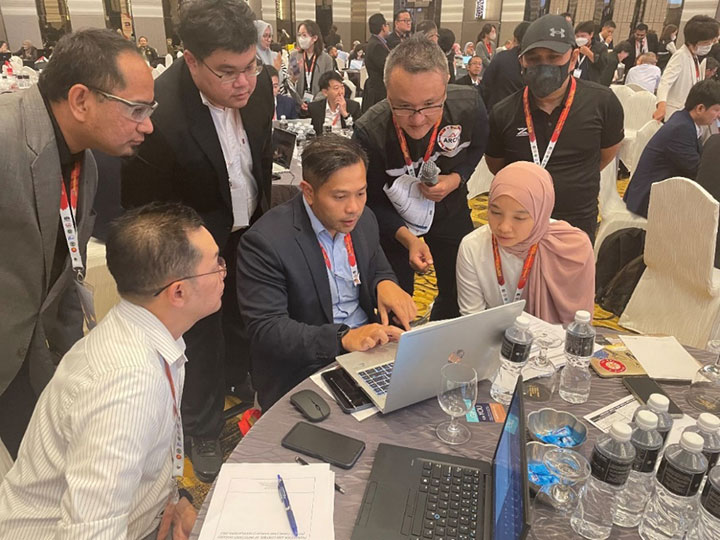
MDS exercise led by Dr. Kubo (JAC of the ARCH Project)
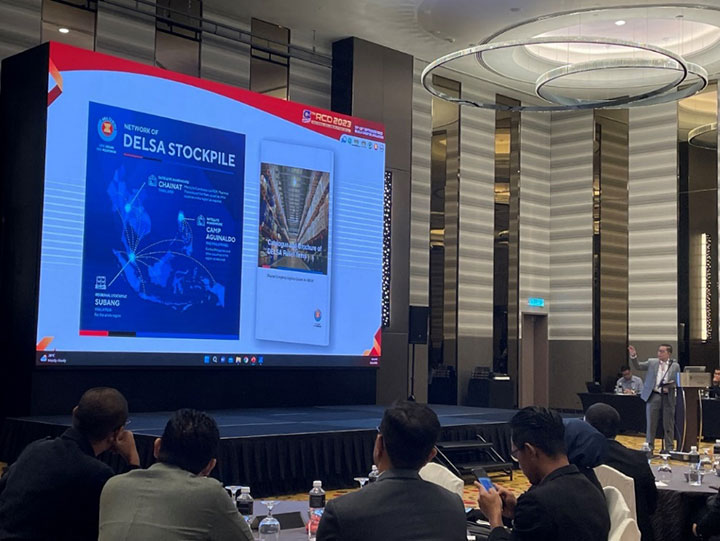
SASOP lecture from AHA Center
- September 26–27: Field Exercise
The two-day full-scale field exercise was conducted at the Special Malaysian Disaster Assistance and Rescue Team Base (SMART Base) in Putrajaya.
Day 1 Highlights:
- Opening Ceremony: The event began with a formal opening, followed by observation by invited dignitaries and stakeholders.
- Reception and Departure Center (RDC) Exercise:
- Each EMT was simulated to arrive at the airport and proceed through entry procedures, including immigration and customs.
- Some countries took this opportunity to review the required documentation submitted during the Pre-deployment phase, recognizing the importance of adhering to a cohesive procedural flow from deployment request to actual field operations.
- This segment reinforced how all aspects of the response are interlinked, particularly the operational necessity of proper documentation at every step.
- Transition to EMTCC (National Level):
- The exercise continued with simulated procedures for progressing from RDC to the Emergency Medical Team Coordination Cell (EMTCC).
- Deployment requests were issued for two designated field sites: Putrajaya district and Serdang district.
- Each participating EMT was assigned to one of these two operational areas.
The first day concluded with all teams having reached their assigned locations, prepared to begin coordinated operations on Day 2.
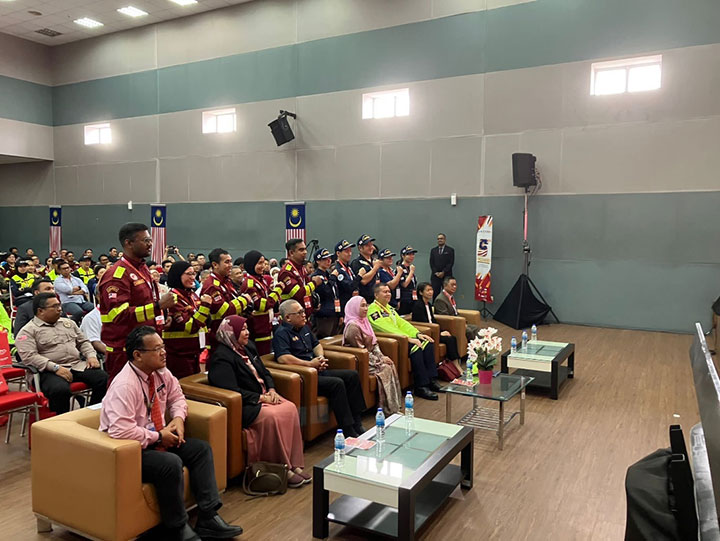
Opening Ceremony:VIP Malaysia + JDR Joint Team
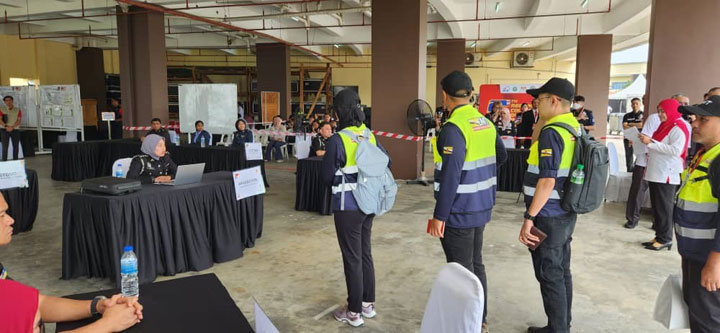
Reception and Departure Center(RDC)and CIQ Exercise
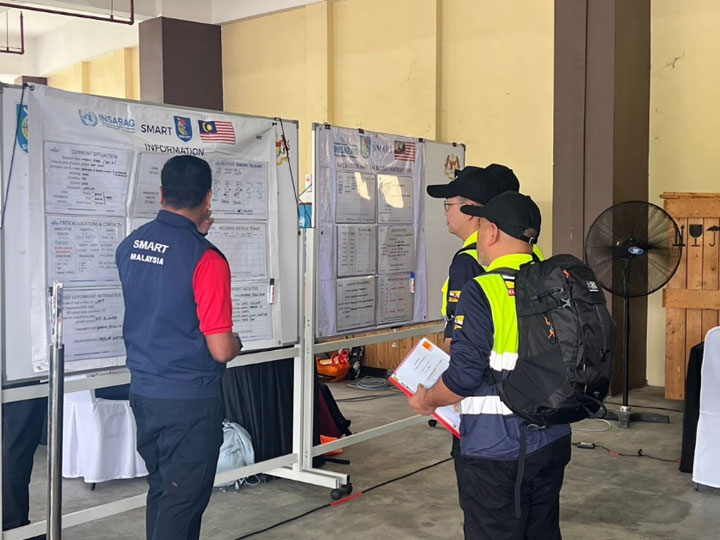
Brunei Team having the briefing from NDMO in RDC
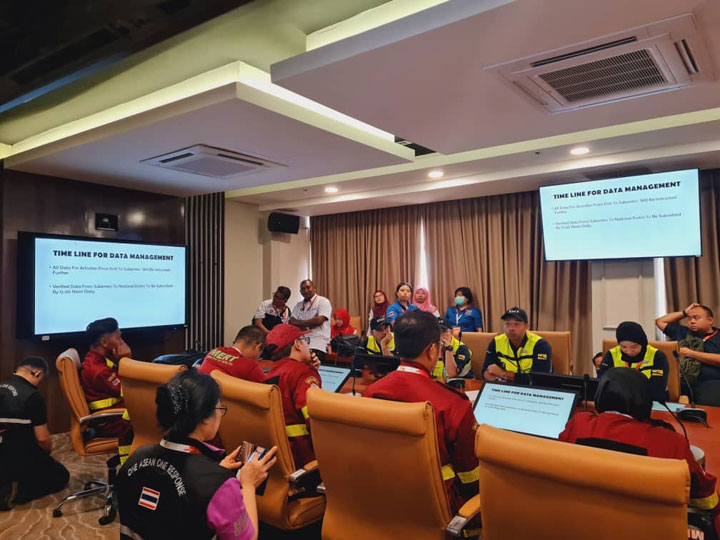
First National EMTCC meeting after the RDC
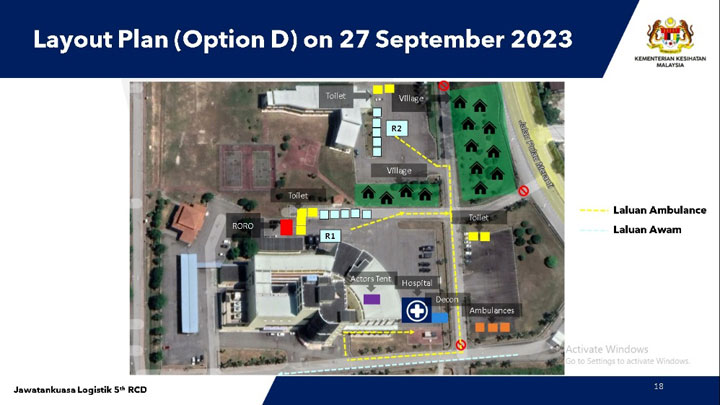
FTX site layout
The day 2 of the field exercise began with Sub-EMTCC meetings held separately in each of the two assigned disaster-affected areas, attended by the deployed EMTs.
Day 2 Highlights:
These were followed by medical support simulations conducted at each location.
Simultaneously, demonstrations such as the decontamination of patients exposed to hazardous chemicals from a simulated chemical plant spill. On the other hand, Health Needs Assessments were carried out, which is one of the important roles of EMTs. Over the course of the day, three Sub-EMTCC meetings were held to provide updates on the disaster situation, health impacts on affected populations, and progress in medical needs. The exercise concluded with the compilation of reports, including final data summaries and exit reports submitting by the all EMTs for demobilization. A representative from the Lao PDR EMT remarked, “We gained more confidence this time as we had multiple opportunities to practice data management,” emphasizing the growing recognition of the importance of data handling and reporting in medical operations.
As a remarkable activity, the exercise incorporated a joint operation scenario in which Japan Disaster Relief (JDR)’s Type 2 EMT collaborated with a Malaysian EMT to provide medical assistance. This joint operation, proposed by the Malaysian side, highlighted both the operational advantages and practical challenges of coordinated response between international and affected-country EMTs, offering valuable insights through direct simulation.
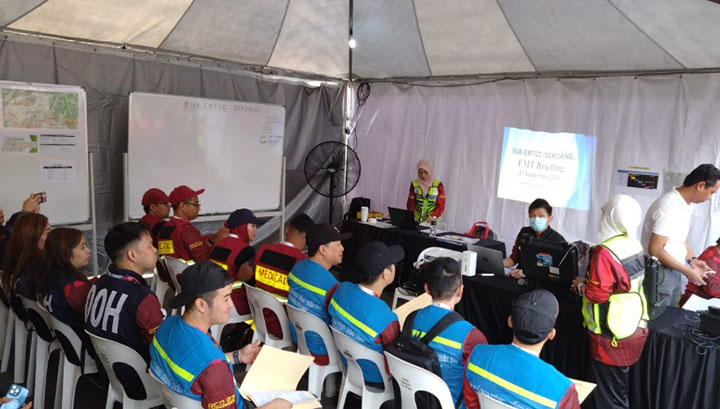
Serdang Sub-EMTCC meeting
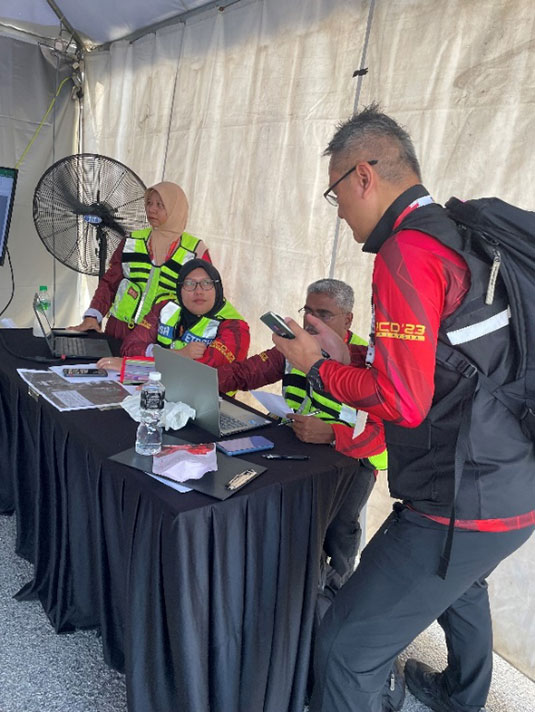
Following-up data management
for a Sub-EMTCC
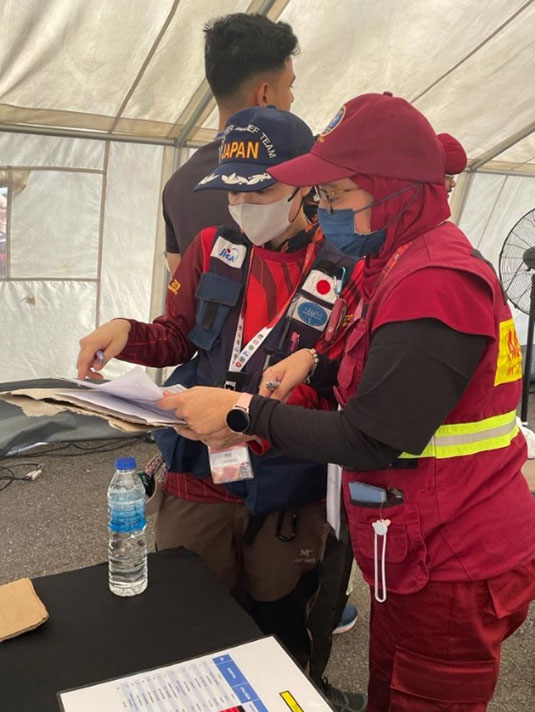
Joint Operation
(Malaysia EMT and JDR)
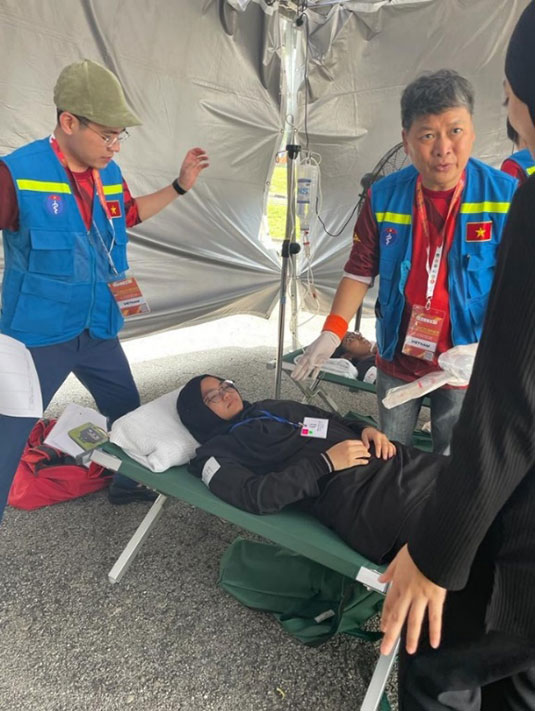
Vietnam EMT
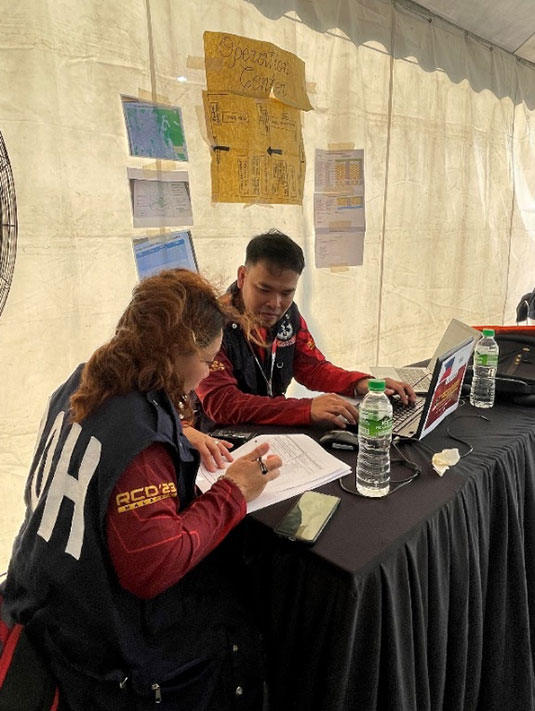
The Philippine EMT
- September 28: After Action Review (AAR)
The After Action Review (AAR) began with a situation update from the Malaysia National EMTCC, reflecting on the progress made throughout the scenario. It was reported that the domestic healthcare system had recovered sufficiently to meet the remaining medical needs, prompting a formal request for demobilization and expressing appreciation to the international EMTs for their support.
Following this update, the session transitioned into a comprehensive review of the entire exercise sequence, including the pre-deployment exercise and the two-day FTX. Participants engaged in discussions to reflect on key lessons learned, operational strengths, and areas for improvement, closing the RCD with a shared commitment to enhancing regional disaster response readiness.
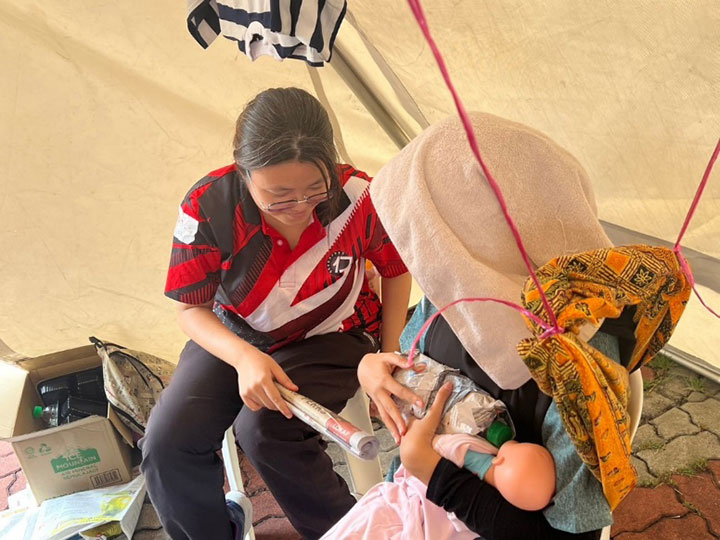
Health Needs Assessment
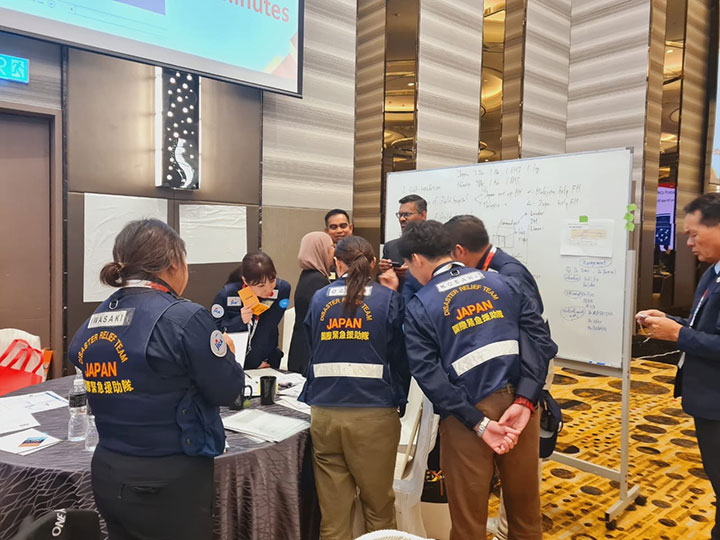
Reflecting and reviewing the operations (Malaysia and JDR)
- A Regional Effort Rooted in National Commitment: The Significance of the ARCH-Developed Regional Drill
The large-scale regional simulation exercise developed by the ARCH Project is more than just a training opportunity—it is a catalyst for strengthening national and regional emergency response systems. Behind the successful implementation lies the host country’s significant effort to review and operationalize its own protocols for receiving international assistance in national scale of emergency. This is not a task the Ministry of Health Malaysia can accomplish alone; it requires close coordination with multiple sectors and agencies in the country, and the strategic mobilization of human resources across the national disaster response system.
By engaging in such exercises, host countries not only enhance their internal preparedness but also contribute to regional learning. Supporting countries gain a deeper understanding of the host's systems and are encouraged to respect and align with local coordination structures. This shared commitment fosters the conditions needed for timely, coordinated, and effective medical response during real emergencies. Ultimately, this exercise embodies the regional spirit of "One ASEAN, One Response", helping to build a sense of unity and mutual responsibility that strengthens ASEAN’s collective disaster response capacity.
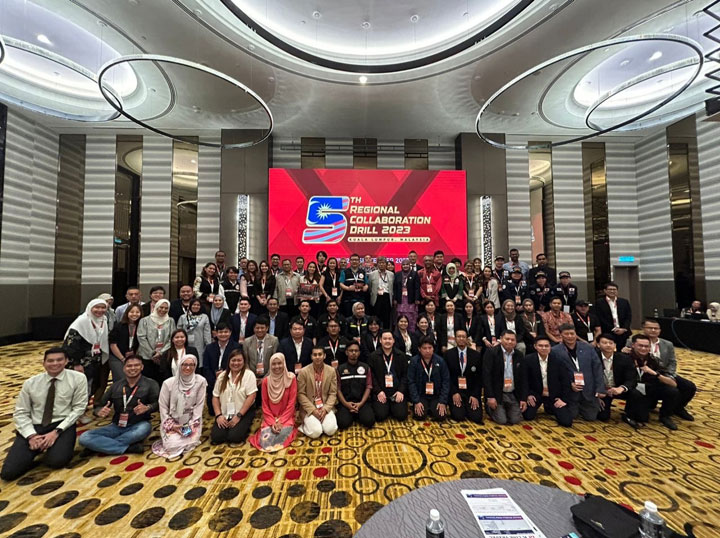
Congratulation for the successful RCD operation, Malaysia team!
